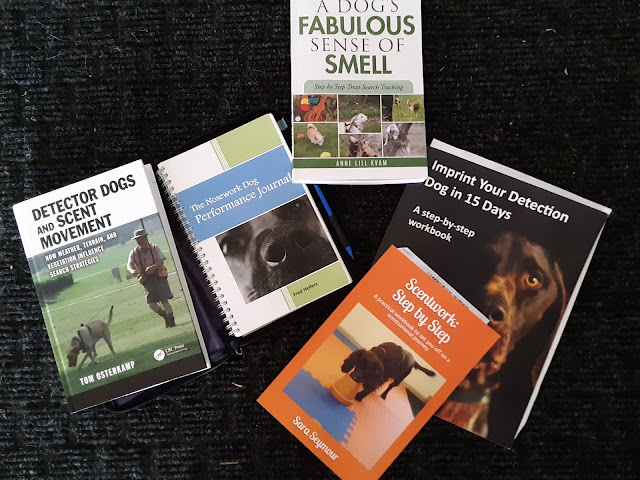I'm not an affiliate of any device - I'm not providing links to suggested devices, nor do I recommend any specific device. Do an internet search to find out how to purchase a timer.
"Thirty seconds!"
Do those words cause your stomach to flip-flop just a little? Once you have progressed beyond NW1/novice you might start to think about using a timing device to let you know when to call "finish." The higher levels of sport detection competition have larger search areas and shorter search times than NW1/novice.
When should you use a timer? Certainly in AKC Master and Detective searches, which don't have a 30-second warning. The timer allows you to call "finish" before time is up, saving your team from an NQ score, or lost points. I find a timer very helpful in Elite searches. I can budget my allotted search time in very large search areas, by dividing the time spent in different sections. Some handlers may find a timer useful for lower levels, too.
Which device is right for you? Some of the common options are your cell phone, a simple stopwatch, or an interval timer.
Cell phone: PROS - you already have one, no need to buy another device. CONS - usually pretty bulky and heavy. And I would probably get a spam call during a search.
Stopwatch: PROS - fairly inexpensive, usually easy to use. CONS - you have to look at it to know how much time you have left. You can wear it around your neck.
Interval timer: PROS - can be set to vibrate or beep at your predetermined intervals. Not terribly expensive, depending on the model. Can be set to alert you each minute, or other intervals of time, as well as the final time. Can be worn on your wrist or put in a pocket. CONS - takes practice to set it, and takes a little time to reset it between searches.
Smart watch - I've never used one, so I can't offer any opinions. Some people recommend them, though.
Choose the device that works best for you!
Ask your instructor or others in your nosework class if you can borrow their device for a training search or two to get the feel of the timer without having to buy one.
Whichever device you choose, use it during training sessions so you are completely comfortable with adjusting the variables. Make starting the device part of your start line routine so you won't forget to push the button. Been there, done that, and it's hard to figure out how to effectively divide a huge Elite search area when you're not sure how much time you have left. That's stress I don't need during a search.


.jpg)








